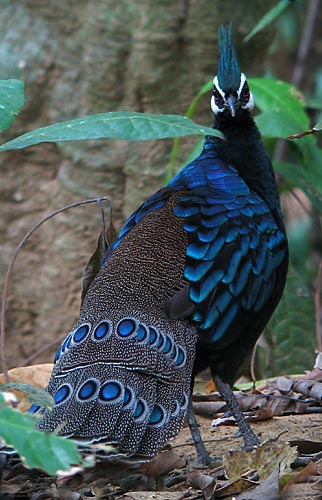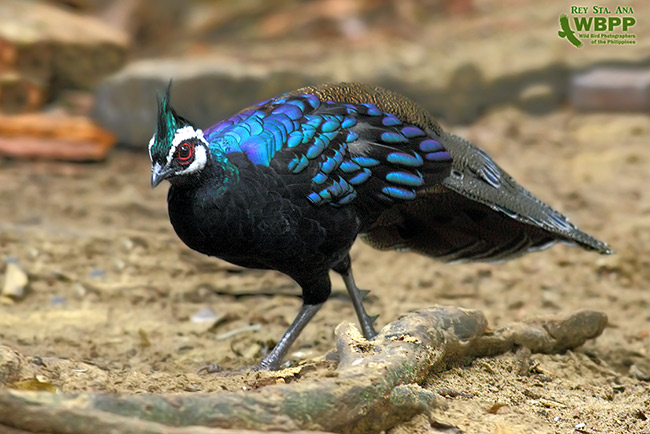
Polyplectron emphanum
SUBFAMILY
Phasianinae (Tribe Phasianini)
TAXONOMY
Polyplectron emphanum Temminck, 1831, Sunda Islands or
Moluccas (=error: Palawan Island, the Philippines). Monotypic.
OTHER COMMON NAMES
English: Napoleon’s peacock-pheasant; French: йperonnier
napolйon; German: Napoleonfasan; Spanish: Espolonero de
Palawan.
PHYSICAL CHARACTERISTICS
Male 20 in (50 cm); female 16 in (40 cm); male 1.0 lb (0.4 kg);
female 0.7 lb (0.3 kg). Male has a long, pointed crest on head,
solid black underparts, shiny blue and green on mantle, and a
distinctive black and white face pattern. Female is brown with
buff markings.
DISTRIBUTION
Palawan Island, southwestern Philippines.
HABITAT
Previously typical of lowland coastal forest below 2,000 ft (600
m); this now mostly logged and species found inhabiting montane
forest and bamboo scrub at 4,900 ft (1,500 m) in 2000.
BEHAVIOR
No information available.
FEEDING ECOLOGY AND DIET
No information available.
REPRODUCTIVE BIOLOGY
Males call and keep small areas clear of leaves, for use as
courtship display grounds; clutch size two; incubation 18–20
days.
CONSERVATION STATUS
Vulnerable and on CITES Appendix I, prohibiting trade in
wild birds.
SIGNIFICANCE TO HUMANS
None known.
Photo Gallery of - Palawan peacock-pheasant




 Animalia Life
Animalia Life